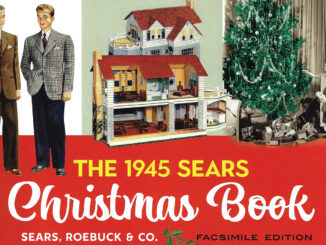
(The following REMEMBERING column exists entirely with excerpts on the life of a Bowling Green native prepared by Nancy Disher Baird, Kentucky Library and presented to the Kentucky Historical Society March 5, 2008. Due to the length of the outstanding selection, only highlights have been used for reader’s introduction to this former resident.)
“Rebel With a Cause: Emanie Nahm Sachs Arling Philips”
“Kentucky points with pride to a long list of 20th century women who have won accolades for writing fiction… However, few modern readers are familiar with the works of Emanie Sachs.
“Emanie was a rebel with a cause. Her contemporaries remember her as flamboyant, and as a girl who defied local mores…. Born in 1893, Emanie Nahm grew to maturity in the years during which the legal status of women achieved major changes… Like many of her contemporaries, young Emanie fought against the ‘old-fashioned’ Victorian ideas of her parents. Her battle for change, and their opposition to it, would flavor her writings.
“As an only child, Emanie grew up in her family’s spacious home in Bowling Green. Her father, Max B. Nahm, was a Warren County native and civic-minded lawyer turned-banker. He probably was south Kentucky’s best known and one of the area’s wealthiest residents.
“Emanie’s parents surrounded her with lots of love and all that… money could buy. Much to her parents’ dismay, however, young Emanie developed into a tomboy… not part of the repertoire needed by a homemaker… Emanie’s parents and their contemporaries thought that being a good homemaker should be the number one goal of all women.
“Because her peers took art lessons… so did Emanie. She enjoyed drawing and sketching, but her parents frequently admonished her that men did not like women who excelled in creative endeavors… Emanie concluded that women enjoyed the limited options of wife and mother – or old maid. Emanie… quit her art class.”
“Knowledge of literature, however, ranked as a social and cultural asset… her family encouraged Emanie to read… as she read, she also dabbled in writing. At age eleven she authored a very brief article… that appeared in… a popular children’s magazine… the Nalm’s expressed disapproval… and admonished her that ‘men don’t like that sort of thing’. Fear of becoming an old maid weighed mightily on the pre-teen.
Despite her dread of spinsterhood… Emanie developed into a petite, attractive, fashion-conscious young woman… Intelligent, witty, and well-read, she graduated from Bowling Green’s Potter College for Young Ladies, attended Western Normal School… and a few classes at Ward Belmont in Nashville… Emanie exhibited little interest in her course work and dropped out of school.
“During her twentieth summer she visited friends in New York City… obtained a job writing for the New York Times. She enjoyed her responsibilities and assignments, because she had been raised to believe that ladies should be ‘social butterflies’ rather than ‘working drones’… during the five years… she received 26 marriage proposals… Some of that attention came from Walter E. Sachs, whose wealthy family owned the highly acclaimed Goldman-Sachs insurance and investment company. Following a brief courtship, Emanie and Sachs were married in July of 1917. Their only child arrived a year later.
“Emanie enrolled in a writing class at New York’s Columbia University in 1920… and published several short stories… the popular magazine, ‘Snappy Stories’ carried Emanie’s article entitled, ‘The Wicked City’… a few months later… one entitled ‘What Can Be Sweeter’… concerned a small-town girl and the temptations of the big city.
“Another… magazine, ‘The Smart Set’, published her article… Woman’s Home Companion carried ‘May – Mad’… Pitkin published a collection of short stories… Thirty-one-year-old Emanie published her first book in 1924. Entitled ‘Talk’… set in the imaginary town of Merville, but Bowling Green’s readers then and now easily recognized the novel’s setting… the fountain in the middle of the town, the opera house on the square, the pavilion at Beach Bend Park, the axe handle factory by the railroad, the Confederate fort on Louisville Road, the Women’s Club Library in City Hall, the college on the hill, the St. James apartments, the country club’s rustic club house, and Fitzpatrick’s Bar…
“’Talk’ opened in 1899 as a few of the town’s gentry discussed the plight of orphaned, eighteen-year-old Delia Morehouse… ‘Talk’ became an immediate best seller. Several reviewers compared Emanie’s book to ‘Main Street’ by Sinclair Lewis… the book… certainly upset its Bowling Green readers…
“Two years after the appearance of ‘Talk,’, Emanie published ‘Red Damask,’ a novel about a wealthy Jewish family in New York City… The main character, a teenage girl, struggled for independence and fought to escape from the Victorian ideas of her family… In 1928, Emanie published a biography of Victoria Chatlin Woodhull, the beautiful, quick-witted, magnetic adventuress who shocked Americans in the 1870s with her advocacy of free love and equal rights for women.
“The 1930s brought trauma to Emanie’s life…. illness, surgery and painful and lengthy recoveries beset her… her beloved mother died in 1937… Emanie’s husband of 21 years asked for a divorce… Emanie rushed into a number of relationships, all of which ended painfully. Hurting from rejection and disappointment, she changed her name to Arling… she also sought professional help… in 1963 she embarked on a second and apparently happy marriage.
“Emanie sat at her typewriter nearly every day until a few years before her death in 1981, but except for a brief autobiographical volume, released in 1960 by a vanity press, she published nothing… Emanie died June 13, 1981, and was buried in Canaan, Connecticut. Survivors included her husband August Philip, her daughter Jane Hodes of Los Angeles, three grandchildren and three great-grandsons.
“And that was Emanie Nahm Sachs Arling Philips – terrible and wonderful.”
(Special thanks to author, Nancy Blair, for the in-depth look at Emanie Nahm in her Top Scholar delightful presentation and allowing the above facts to be quoted verbatim.)
-by Mary Alice Oliver
About the Author: Mary Alice Oliver is a Bowling Green native who is a 1950 graduate of Bowling Green High School. She retired from Warren County Schools after 40 years in education. Visiting familiar sites, researching historical records and sharing memories with friends are her passions.








